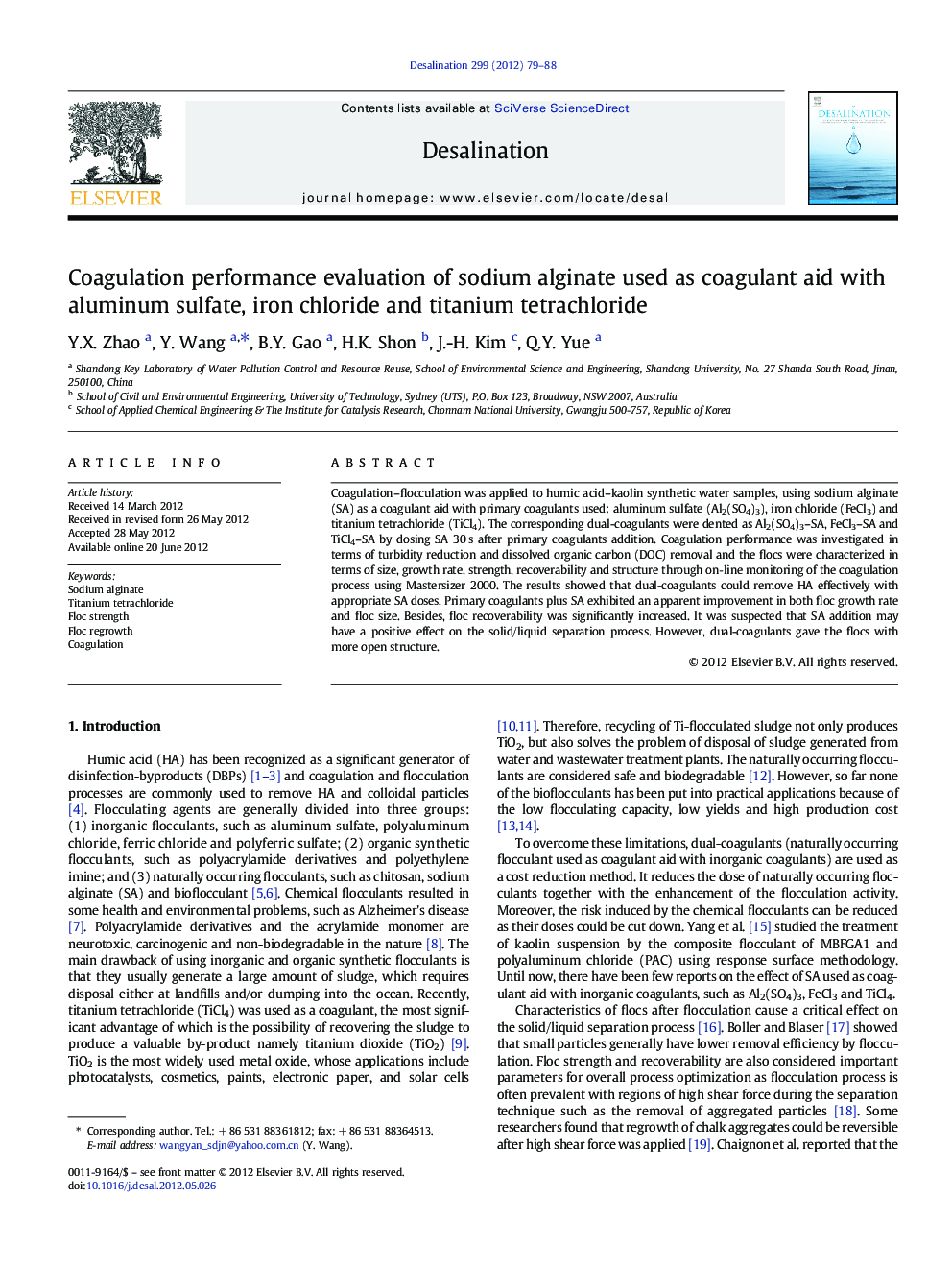| Article ID | Journal | Published Year | Pages | File Type |
|---|---|---|---|---|
| 624267 | Desalination | 2012 | 10 Pages |
Coagulation–flocculation was applied to humic acid–kaolin synthetic water samples, using sodium alginate (SA) as a coagulant aid with primary coagulants used: aluminum sulfate (Al2(SO4)3), iron chloride (FeCl3) and titanium tetrachloride (TiCl4). The corresponding dual-coagulants were dented as Al2(SO4)3–SA, FeCl3–SA and TiCl4–SA by dosing SA 30 s after primary coagulants addition. Coagulation performance was investigated in terms of turbidity reduction and dissolved organic carbon (DOC) removal and the flocs were characterized in terms of size, growth rate, strength, recoverability and structure through on‐line monitoring of the coagulation process using Mastersizer 2000. The results showed that dual-coagulants could remove HA effectively with appropriate SA doses. Primary coagulants plus SA exhibited an apparent improvement in both floc growth rate and floc size. Besides, floc recoverability was significantly increased. It was suspected that SA addition may have a positive effect on the solid/liquid separation process. However, dual-coagulants gave the flocs with more open structure.
► Dual-coagulants could remove HA effectively with appropriate SA doses. ► Dual-coagulants gave faster floc formation and yielded flocs with larger size. ► Floc recoverability was significantly improved due to SA addition. ► Dual-coagulants yielded flocs with more open structure.
